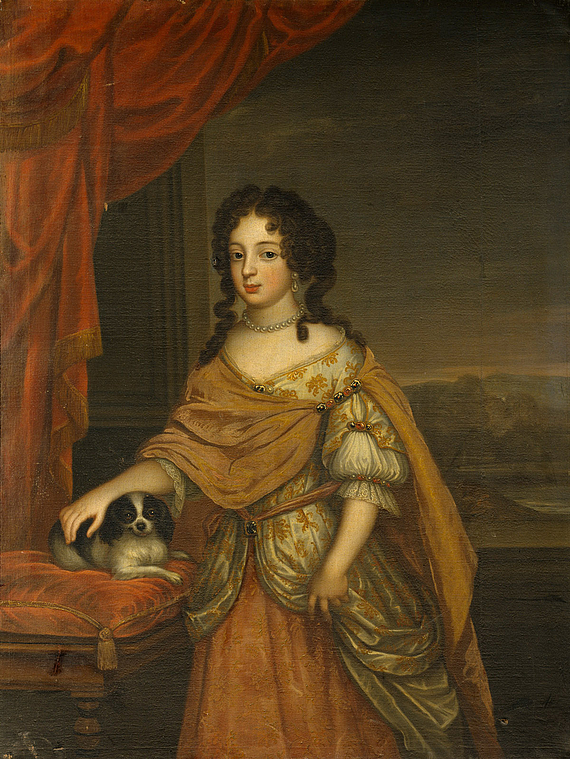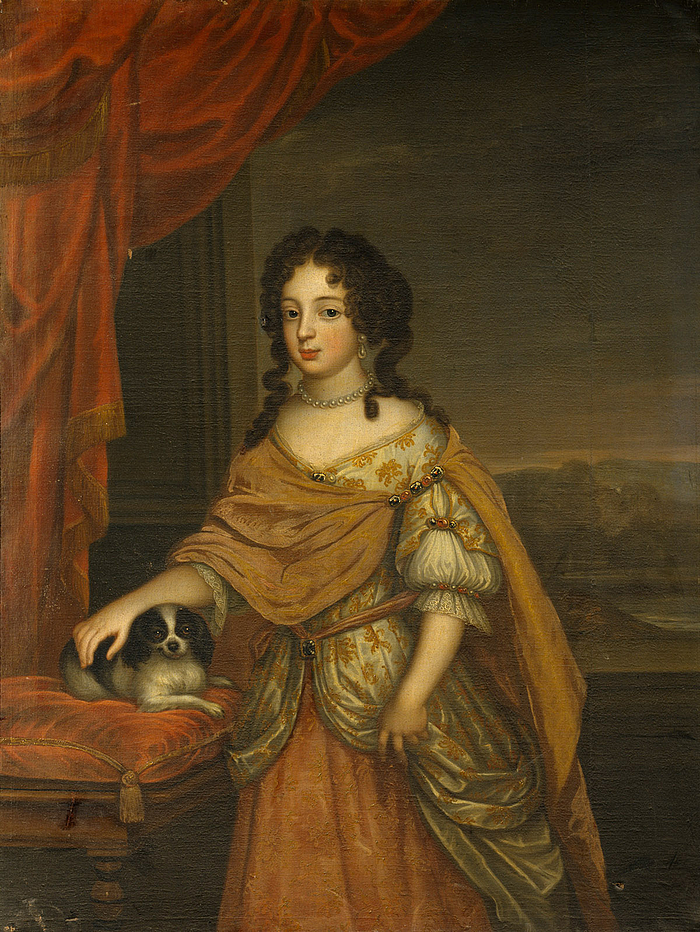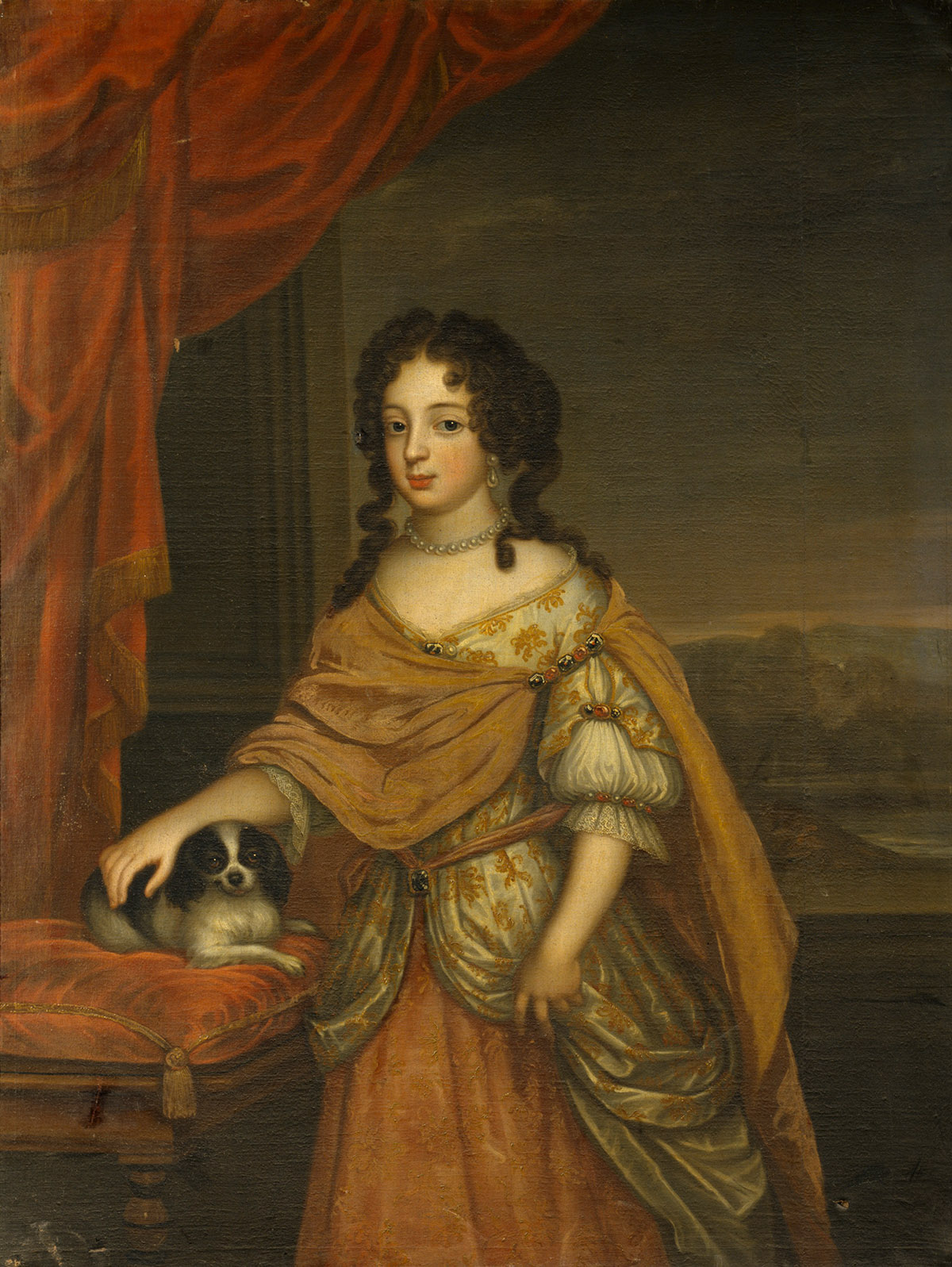Did Gottfried's dog have a soul?
In 1713, Duke Moritz of Saxe-Zeitz wrote to Gottfried Wilhelm Leibniz: "I recently saw a curiosity in Leipsic, namely a real, living, natural dog which could say more than 50 words [...] and the ABC except for M, N, X and Y." The dog was shown to Gottfried in Zeitz shortly afterwards. Rather underwhelmed, he reported to the French Academy of Sciences in a dry fashion that the chien parlant were able to pronounce 30 words, including Thé, Caffé, Chocolat and Assemble.
It is unconfirmed if Gottfried had a dog himself. However, dogs were definitely omnipresent in everyday life of the 17th century, whether they were stray dogs, precious pets at royal courts or simply curious attractions. French philosopher René Descartes had shaped the mechanistic world view where God was regarded as a clockmaker and man as a "divine machine". Descartes considered animals to be "dull and unreasonable" (animaux sans raison), emotionless machines which could feel neither pain nor joy. He would only believe in a place in heaven for human, "rational" souls, as animals, according to him, did not have a soul. Many dogs were mistreated. In England, "turnspit dogs" had to run inside wooden wheels for hours to turn meat skewers in the kitchens. Some were luckier. At royal courts, a dog served as a status symbol. Lords would mostly keep hunting dogs while ladies would prefer smaller breeds. In France, people would adorn themselves with a bichon (lap dog). In England, noble ladies would carry a "comforter" in front of them as a living alternative to a hot-water bottle to warm their souls. Referring to her mother Elisabeth Stuart, who had given birth to thirteen children, Electress Sophia remarked, sharply as usual: "She clearly preferred the sight of her monkeys and dogs to that of her own children." Famous painters such as van Dyck, Rubens or Velásquez depicted ducal masters and mistresses together with their darling dogs in oils. Even Electress Sophia had a Cavalier King Charles Spaniel placed next to her daughter Sophia Charlotte on a velvet cushion for a child's portrait. The painting was crafted during a visit to Louis XIV at Versailles in 1679. People at the court of Hannover were, of course, just as passionate about keeping dogs. Legend has it that the Hundestein (dog stone), an obelisk in the Georgengarten south of the Leibniz Temple, is meant to remind people of how Sophia Charlotte was rescued by a greyhound, a gift from Peter the Great. As the story goes, the dog saved the princess when she fell into the water while playing in the park.


 ©
Photo: Roland Handrick
©
Photo: Roland Handrick
Gottfried knew about the affection the House of Welf had for its dogs. When he was looking to purchase a new kind of steam digester made by French inventor Denis Papin for research purposes, he aroused the interest of his "sponsors" with a humorous letter of protest written from the perspective of dogs. In the letter, the dogs complained about pressure-cooking which allowed bones to be soft-boiled so that humans could eat them themselves. The eloquently phrased complaint even made reference to Homer and the Bible. It was signed by Laelaps, Amarille and Pug. Gottfried evidently had a waggish sense of humour. The letter certainly made the dog-owning masters and mistresses chuckle. After all, people shared a social bond with their dogs back then just as much as they do today. Duchess Sophia Charlotte was therefore concerned about whether her dogs were soulless machines and what might happen to them after they died. Gottfried replied in a comforting manner: "This much is certain: nothing is insignificant or lost in the universe, neither are the dogs of Madame which, like all animals, are undoubtedly machines, but each of them inspired by the immortal unit we call a soul [...]." To Gottfried, the difference between humans and animals was merely gradual. All living beings, in his view, were made up of an indivisible, eternal unit (monad) created by God. Since only humans were capable of self-reflection and reason, the human soul went to heaven without losing its "personality". Animals, as Gottfried suggested, were able to feel joy and pain though. Their souls were also immortal and merged into nature after death. For "death is nothing but the folding and unfolding of a true and everlasting life". Relieved, the duchess replied: "When I think of my dear dogs, it gives me great comfort to know that animals do not die completely. Descartes's concept of the clockwork seemed utterly absurd to me." And she went on to confront the Archbishop of Reims, an advocate of Descartes's theories about soulless animals, with the following question: "When you are jealous, are you a machine or human? For I know no one more jealous than you, except for my dogs; therefore, I would like to know whether this is the movement of a machine or the passion of a soul." The bishop "got angered and went away without giving an answer." Gottfried did not think "that you insult people by not granting them the privilege of being the only ones having a soul". For that would mean: "to think very little of the wealth of nature if you set such tight limits to it."
My dog would have liked Gottfried!








